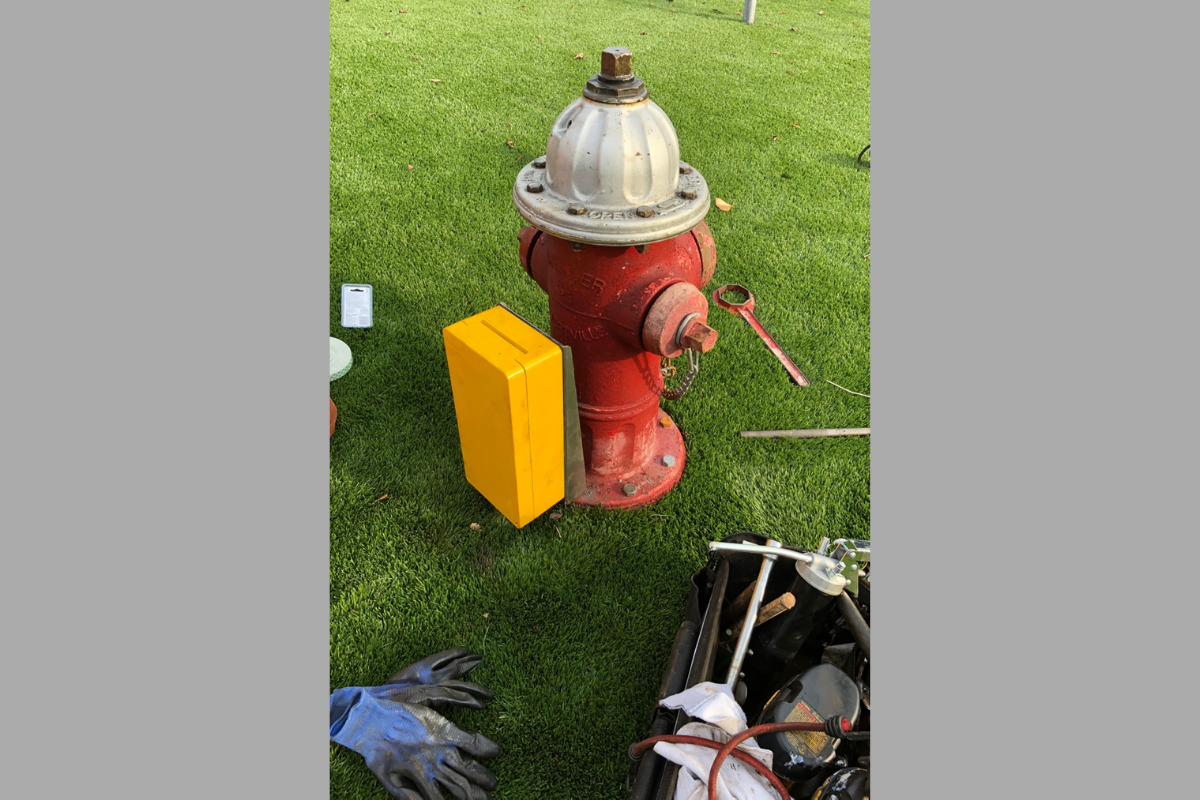According to a 2016/17 report by the Environmental Commissioner of Ontario, leaks cost the province’s municipalities up to 40 per cent of their drinking water. As a result, Ontario taxpayers are spending millions of dollars each year to treat and pump water that never reaches the tap.
Technology from Digital Water Solutions (DWS) is changing that. The Ontario company has created a monitoring device that sits inside a standard fire hydrant, listening for noises that indicate potential problems in the water system. “If you can find a leak before it actually bursts and takes out the road, you’re way ahead of the game,” says Tim Sutherns, head of automation and controls at DWS.
According to Sutherns, the company’s 10-year journey wouldn’t have been possible without the support of Ontario Water Consortium (OWC). “They’re able to bring industry and academia together to find ways to unlock solutions. And it’s been great,” he says.
Today, you’ll find their devices in a dozen communities in Canada, the U.S. and Iceland. But getting the game-changing technology to market was no quick or simple process.
Under pressure
It started in 2009, when inventor and now DWS partner Don Plouffe patented the pressure-monitoring solution. Two years later, they field tested the device in Chatham/Kent, Guelph and Centre Wellington through Ontario’s Showcasing Water Innovation program.
Those tests demonstrated the technology’s impressive sensitivity. In Guelph, it could pick up pressure drops created by a watermain break on the other side of the city. Meanwhile, the tests proved that the device works, revealing fluctuations in pressure and high-pressure and low-pressure zones that managers weren’t aware of.
Armed with this kind of information, municipalities can identify pressure issues sooner, run their systems more efficiently and gain insights into their largest unseen assets.
Developing a sound idea
Next, DWS teamed up with University of Waterloo professor Sriram Narasimhan to incorporate hydrophone technology into their product. Because sound is pressure, noises can reveal the location of leaks. Through the research collaboration, DWS was able to determine how far apart they needed to place sensors in order to pinpoint leaks.
Although they could now capture acoustic data, DWS needed a way to understand what the noise was telling them. To help make that happen, OWC funded a research project between Narasimhan and data-analytics company Pattern Discovery Technologies. Together, they developed AI software to analyze the data and identify patterns.
After a slew of refinements — and a US$28,000 process to certify their circuit boards — DWS officially commercialized its technology in December 2018.
Today, the high-tech devices can be installed in less than an hour and don’t interfere with hydrant operations. Meanwhile, sophisticated cloud-based analytics track all the data, sending automatic alerts to managers of any suspicious patterns the system detects.
Real-world wins
However, to gain market traction, the company still needed to show just how effective their technology was. That’s where the City of Waterloo came in. With funding from the Canadian Water and Wastewater Fund, the City installed 40 devices in 2019.
Within the first week of the pilot, a backhoe ruptured a watermain on a construction site. As expected, the sensors picked it up. But Sutherns knew that wouldn’t be enough to wow prospective customers. “Most technology works when you get a break,” he explains. “The key is finding the smaller leaks in the system.”
The devices did that too. Late one night, they picked up a transient pressure dip. It was the start of a leak. Sure enough, when Sutherns drove by the location the next morning, the pipe had broken.
As the Waterloo pilot proved, the DWS device is sensitive enough to pick up flows of just 25 litres per minute. Plus, it can detect leaks that never surface, draining invisibly into the surrounding soil.
The power of partnerships
Today, the partnerships with university researchers, tech experts and municipalities have paid off. Eighty plus units have now been installed in several cities, with more purchase orders lined up for 2020. Sutherns is confident sales will multiply from there. Once managers see how well the devices work, they’ll order more, he predicts — and tell colleagues in neighbouring municipalities as well. “It’s like a snowball,” he says.
He points to OWC’s Advancing Water Technologies (AWT) funding, which allowed small and mid-sized companies like his to tap into university and college lab facilities and take advantage of their research expertise. Meanwhile, OWC-led events and outreach helped shine a spotlight on the company through media attention, online videos and a booth at the AWT Showcase.
And what’s good for DWS is good for other companies as well. “Water loss is a big issue,” Sutherns says. “Anything that helps us fund and/or market the solutions that are being created is a win for the Ontario water sector as a whole.”


